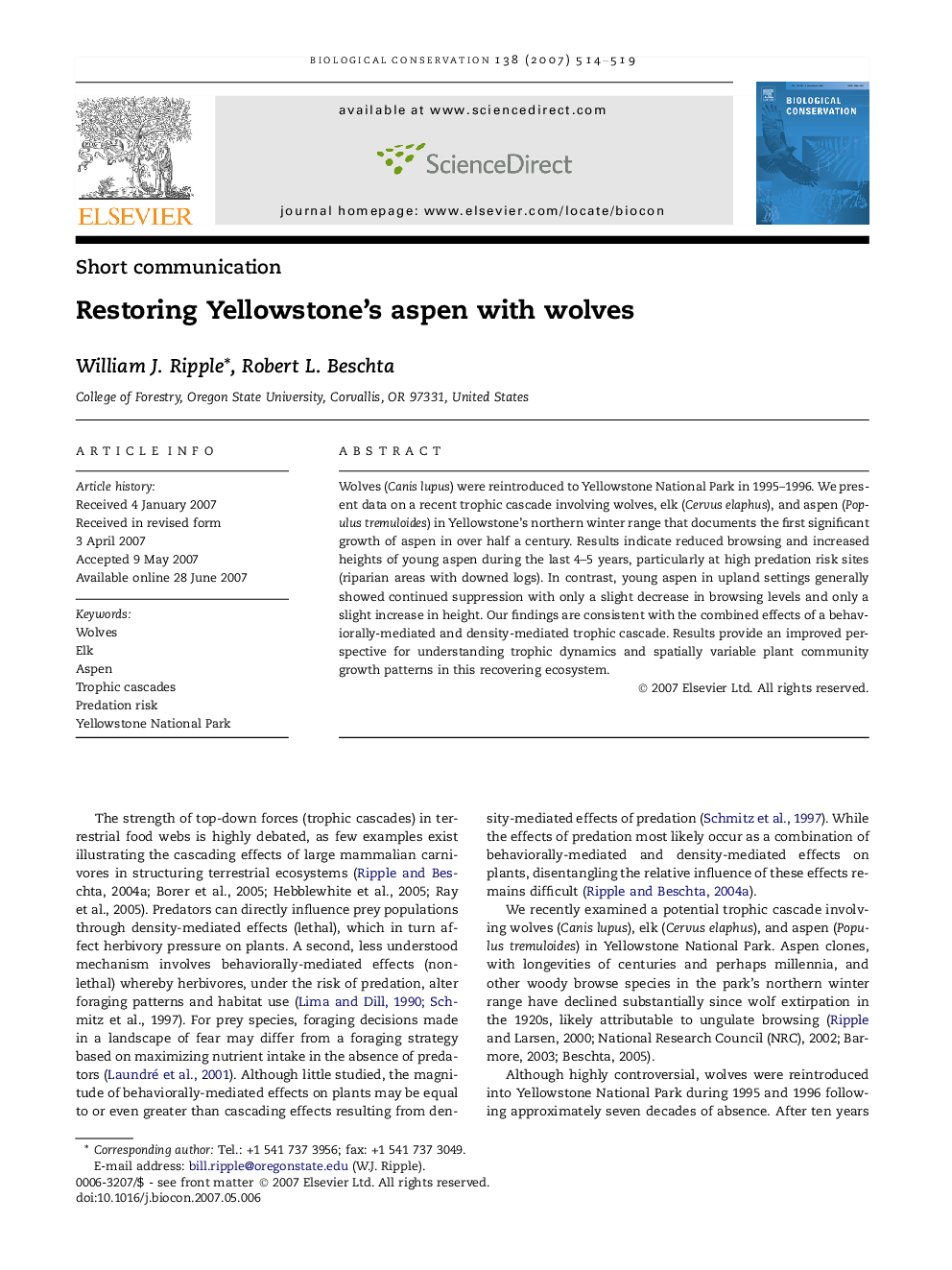| Article ID | Journal | Published Year | Pages | File Type |
|---|---|---|---|---|
| 4387175 | Biological Conservation | 2007 | 6 Pages |
Wolves (Canis lupus) were reintroduced to Yellowstone National Park in 1995–1996. We present data on a recent trophic cascade involving wolves, elk (Cervus elaphus), and aspen (Populus tremuloides) in Yellowstone’s northern winter range that documents the first significant growth of aspen in over half a century. Results indicate reduced browsing and increased heights of young aspen during the last 4–5 years, particularly at high predation risk sites (riparian areas with downed logs). In contrast, young aspen in upland settings generally showed continued suppression with only a slight decrease in browsing levels and only a slight increase in height. Our findings are consistent with the combined effects of a behaviorally-mediated and density-mediated trophic cascade. Results provide an improved perspective for understanding trophic dynamics and spatially variable plant community growth patterns in this recovering ecosystem.
